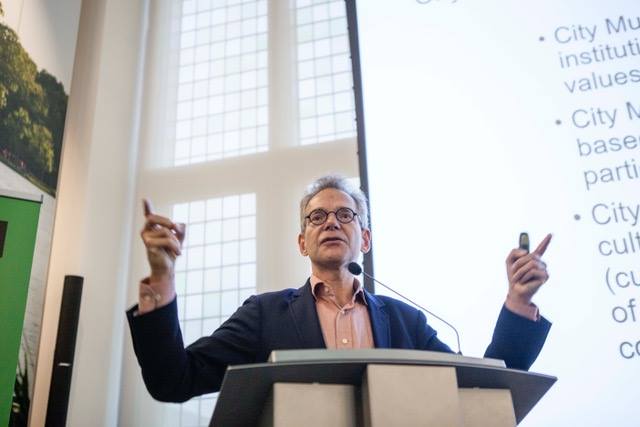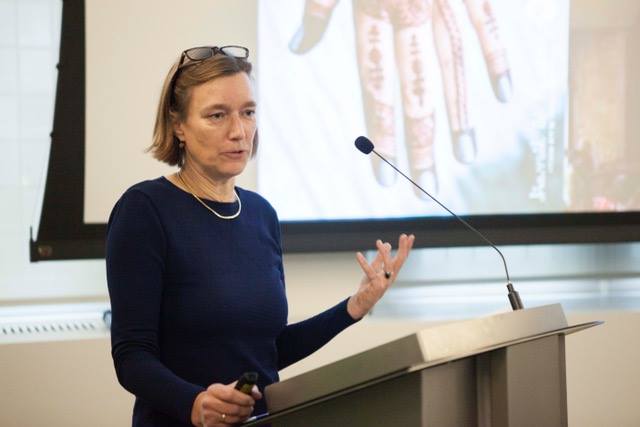Report of the Expert meeting on Intangible Cultural Heritage, Museums and Diversity (7.11.2017, Rotterdam)
On November 8, 2017 the participants to the Expert meeting were welcomed by Paul van de Laar, director of Museum Rotterdam (NL).
Keynote
Hester Dibbits (Amsterdam University of the Arts & Erasmus University Rotterdam) followed with her keynote, titled Looking for Connections: Collections and Repertoires. Dibbits elaborated on the concept of 'emotion networks', that is based on the actor network theory by Bruno Latour. With the term emotion networks she describes capricious constellations of people who all have different feelings about a (prospective) heritage 'item'. Museums must be aware of those networks when they work on intangible cultural heritage and with its practitioners, and they must be aware of their own role in those networks.
Position paper, reaction and debate
Albert van der Zeijden (Dutch Centre for Intangible Cultural Heritage) subsequently presented the position paper written by Sophie Elpers and himself: Intangible Heritage and the Museum in an Age of Superdiversity (you can read the full text of the position paper here).
Following statements concluded the presentation:
- Museums should engage in contemporary society, responding to the new challenges of superdiversity.
- Museums should provide spaces of reflexivity to go beyond dichotomous othering discourses.
- Intangible heritage can help to make museums more relevant for society.
- Intangible heritage calls for the development of participatory methodologies to engage heritage communities and heritage bearers in their projects and opt for an open and inclusive approach, in which heritage communities are interpreted as dynamic and fluid networks.
- Museums should consider to act as laboratories where different people experiment with innovation for a sustainable future.
Up next was Alexandra van Dongen (Museum Boijmans Van Beuningen & Wereldmuseum Rotterdam). Van Dongen presented some examples of museum projects in Rotterdam, concerning intangible heritage and diversity (e.g. I cook therefore I am) and focussed on the role of the curator in these projects, having to pay attention to multiple histories and multiple realities in the city.
The statements that were presented by Albert van der Zeijden, were the starting point of an interactive debate. In this debate the participants were invited to formulate their opinion by sharing statements on the topic of intangible heritage, museums and diversity.
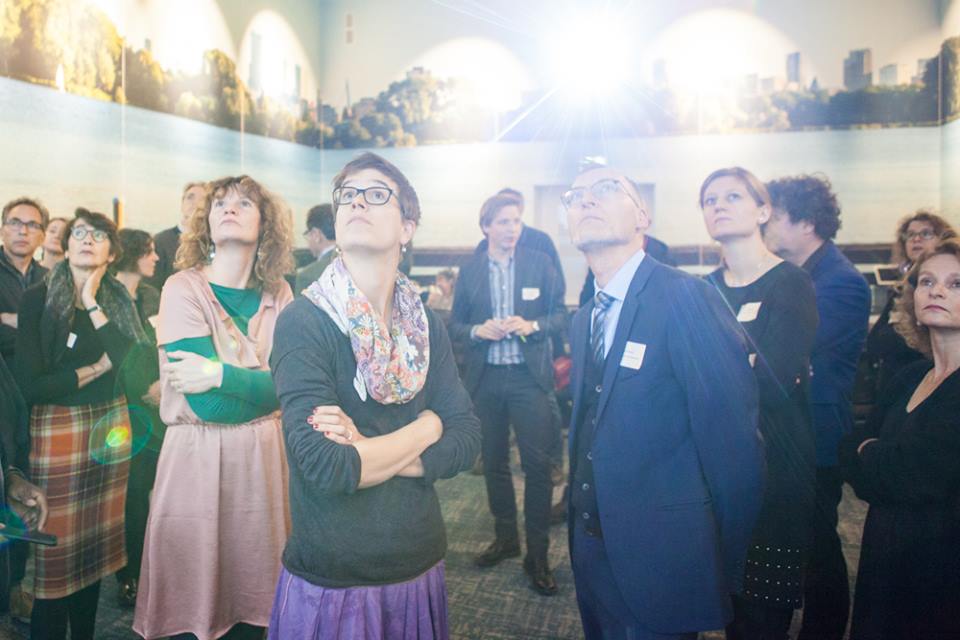
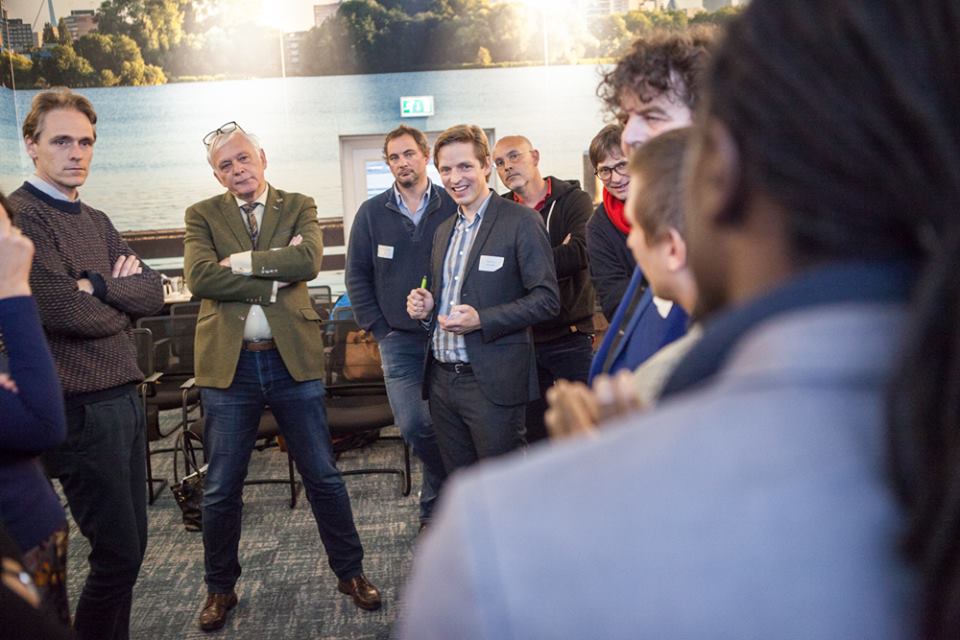
Participants physically opposed or agreed to statements that were presented by others, by changing their position in the room: standing close or moving further away from the person that made a statement, was a signal of (dis)agreement.
A selection from the statements:
- Using terms as ‘we’ and ‘them’ is problematic in the context of museums, intangible heritage and diversity. The question is who constitutes the ‘we’ and ‘them’ categories.
- Intangible heritage can help to break (professional and institutional) borders/boundaries between experts, communities, museum professionals and intangible heritage professionals.
- Museums should not all engage in the same way with intangible heritage and diversity: there is not only one 'right' answer.
- A superdiverse society also needs a diverse cultural heritage sector.
- Museums should provide a frame of understanding and bring people together.
- There should be no difference between tangible and intangible heritage.
- It is strategically important to make a difference between intangible and tangible heritage
- Museums should provide spaces for dialogue.
- Museums can provide spaces of dialogue to go beyond dichotomous ‘othering discourses’
- Not all museums should work in a reflexive way.
- Superdiversity is a topic as much as it is an approach.
- People have to recognise their practices – not objects – in museums.
- …
Inspiring examples on intangible heritage, museums and diversity
Following the debate, thirteen museums from the Netherlands, Switzerland, Belgium, Italy and France presented their inspiring cases on intangible heritage.
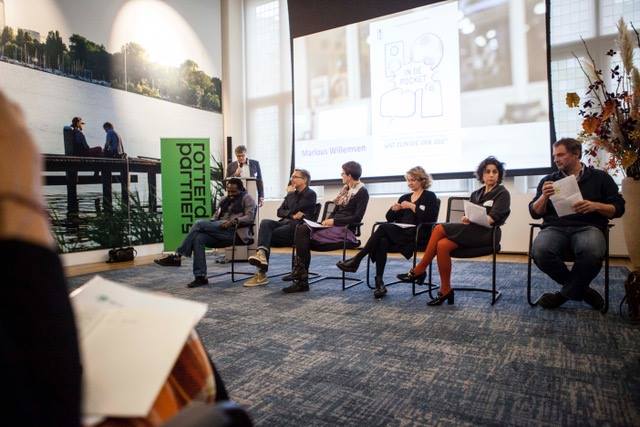
- Marlous Willemsen from Imagine IC (NL) talked about In de Pocket: an exhibition, but also a form of heritage education and an archiving strategy. Imagine IC explored partying, and the practice of selfying and pocket archiving among young adults, as (intangible) heritage of our present time. A collection of ca. 1000 documents of today’s metropolitan party practices was brought together in the process. See PPT - Read article in the magazine 'Museumpeil'
- Stephan Warnik from the Dutch Zuiderzeemuseum continued by elaborating on Pietendorp: a children’s event based on the tradition of Saint Nicolas and Black Pete. In 2004, a Black Pete’s village was installed in this open air museum. From 2014 onwards, there was a lot of public debate and demonstrations against the figure of Black Pete in the Netherlands. How should the museum go about connecting the different points of view that surround this tradition, more specifically its racist connotations? The museum did not yet find an answer to this pertinent question… See PPT - Watch video
- Wayne Modest from the National Museum for World Cultures (NL) (i.e. the Tropenmuseum, Afrikamuseum, Museum Volkenkunde) talked about what diversity means for this Dutch museum that wants to respond to the rapidly changing, increasingly diverse Dutch society. The museum wants to reposition itself as a ‘museum for all – not about them, but for and about us all’. Modest discussed the event(s) serie(s) such as Wie zijn wij (on Dutch citizenship, and on making migrant history a topic of discussion by looking into it via critical, decolonized and intersectional lenses), Hiphop Museum (is hiphop the (museum) collection of the future?), Good Hair Festival (on hair as a way of selfexpression), Decolonize the Museum (an effort to confront the colonial ideas and practices present in ethnographic museums up until this day)… that they have organised in the past.
Olivier Schinz, Barbara Keller and Prisca Senn continued by talking about the work on intangible heritage in three Swiss museums:
- Olivier Schinz, working in the Musée d’ethnographie de Neuchâtel (MEN), talked about two research projects they conducted on intangible heritage: The Midas Touch and Whispered words. Three exhibitions of the MEN were linked to these analyses, and proposed critical points of view on different aspect of the 2003 Convention and the inventorying process of intangible heritage in Switzerland. Bruits investigated the transformation of various sound productions into heritage, Hors-champs questioned the side effect of inventories, and Secrets was a journey – a kind of initiatory journey – into the meander of the secret, considered as an item of ICH. See PPT - Watch video
- Barbara Keller from the Swiss Alpine Museum discussed the traditions of going to hike, mountaineer or climb in the Swiss mountains and the ways in which they try to make connections with different types of visitors of / participants to the museum. See PPT - Watch video
- Prisca Senn focussed on the importance that museums can have as meeting places, as for example experienced in an exhibition in the Swiss National Museum, on memories and oral traditions of refugees. See PPT
Museums from Belgium and Italy also presented how they work on intangible heritage, and with its practitioners:
- Geert Souvereyns from the Bruges Volkskundemuseum (BE) talked about the exhibition Namasté Bruges in which members of the Nepali community from Bruges were portrayed in a photo exhibition, but also invited to assemble an exhibition with objects and videos, which they thought showed their cultural identity and traditions. The community members did guided tours in the exhibition and organised different workshops (e.g. on percussion, madala-making) and organized a light festival as well. See PPT - Watch video
- Julie Aerts from PARCUM, the recently opened museum of dialogue on religion, art and culture in Leuven (BE), stressed the important role a museum can play in the contextualisation of (religious) traditions and the fact that museums can act as an open meeting spaces. See PPT - Watch video
- Davide Gnola talked about the work the Museo Della Marineria (IT) does on maritime intangible heritage (such as sailing, games, cooking techniques, festivals). The museum convinced the local municipality to reserve a part of the local harbour for specific traditional boats. In doing so, they succeeded also in making this previously neglected area into a vibrant place where inhabitants and tourist can see and experience the intangible heritage related to traditional seafaring. See PPT - Watch video
- Alessandra Micoli from the Ecomuseo Urbano Metropolitano Milano Nord elaborated on their ongoing urban mapping project, that provides inhabitants of the city the opportunity to talk about, visualise or materialise their urban intangible heritage. See PPT - Watch video
- Mathieu Champretavy talked about Maison Bruil d’Introd: a museum on methods of conservation, food tradition and alpine architecture related to the present. The museum works together with local food producers and has set up e-commerce possibilities for their products. The diversity of this local production in a rural and mountain area is the core of the museum’s work, and by doing so, it contributes to the transmission of the living heritage of the valley it is located in. See PPT - Watch video
The last two speakers that presented inspiring examples on intangible heritage, came from France.
- Renaud Chantraine, representing the MuCEM (Musée des civilisations de l'Europe et de la Méditerranée), talked about the exhibition project and program called AIDS memories at the Museum (currently in its third phase) in which a plurality of ‘actors’ and ‘source communities’ have thus far participated. At the moment they are in the midst of a reflection about the ‘heritagization’ process that surround AIDS (including people’s memories, rituals and forms of mobilization, …) together with a community committee. See PPT - Watch video
- Marie Grasse concluded this series of museum practices on intangible heritage by elaborating on the work of the French Musée du Sport on the topic of football supporters. In a nationwide project - in which several museums and archives were involved - they investigated current-day, historical and sociological conditions of feelings of attachment to a club, which includes several rituals and social practices people continue and value. See PPT - Watch video
Workshop: tools
Participants to the Expert meeting subsequently participated in a workshop that invited them to think of tools that could help them and other professionals discuss and work with the theme of intangible cultural heritage and diversity. Participants were asked to think about the main insights and open issues and questions about the theme; to think about what this tool should do for museums and heritage professionals and how it can help them; and to think about the objective of the tool.
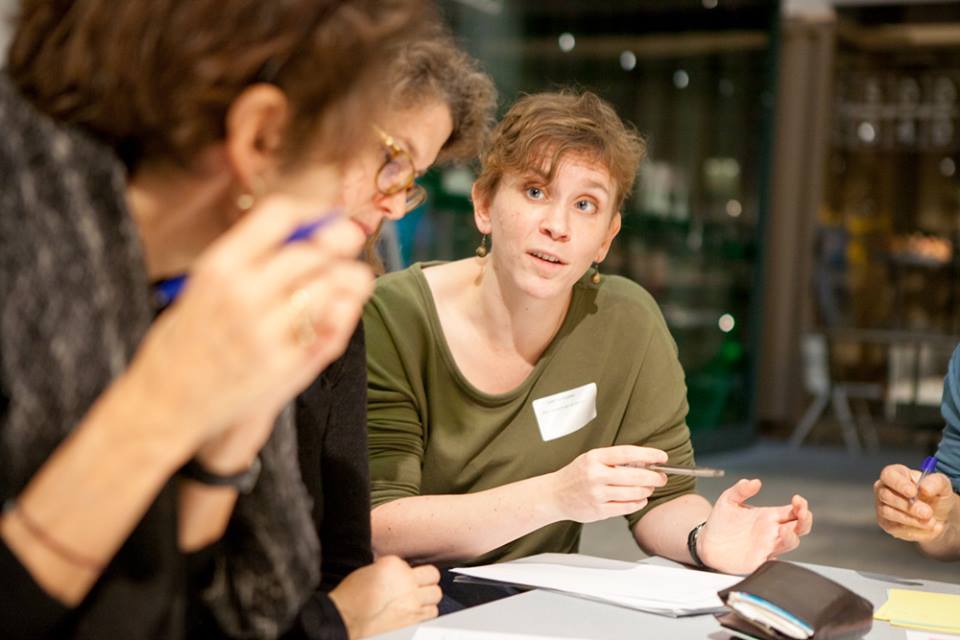
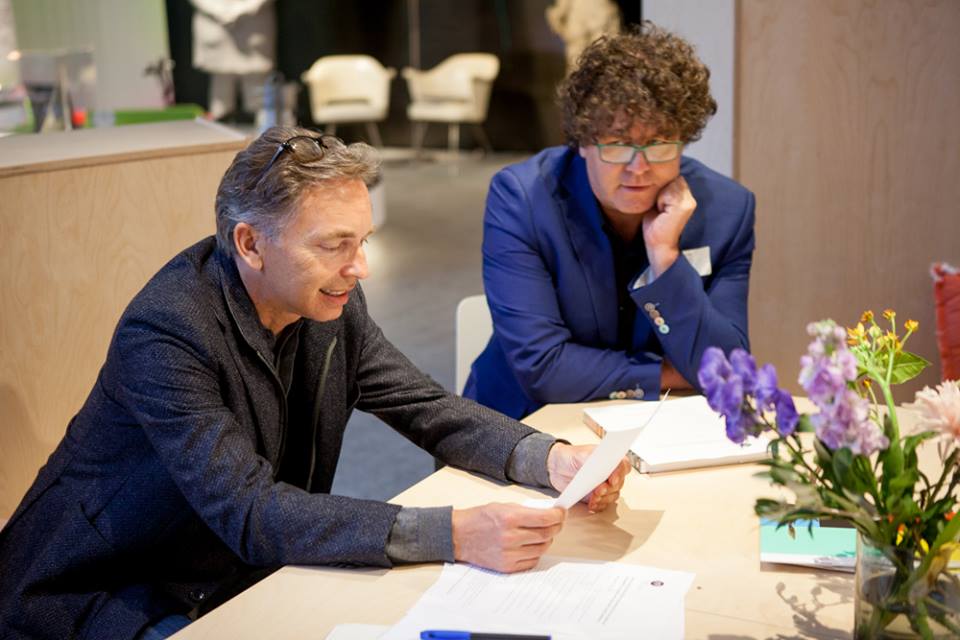
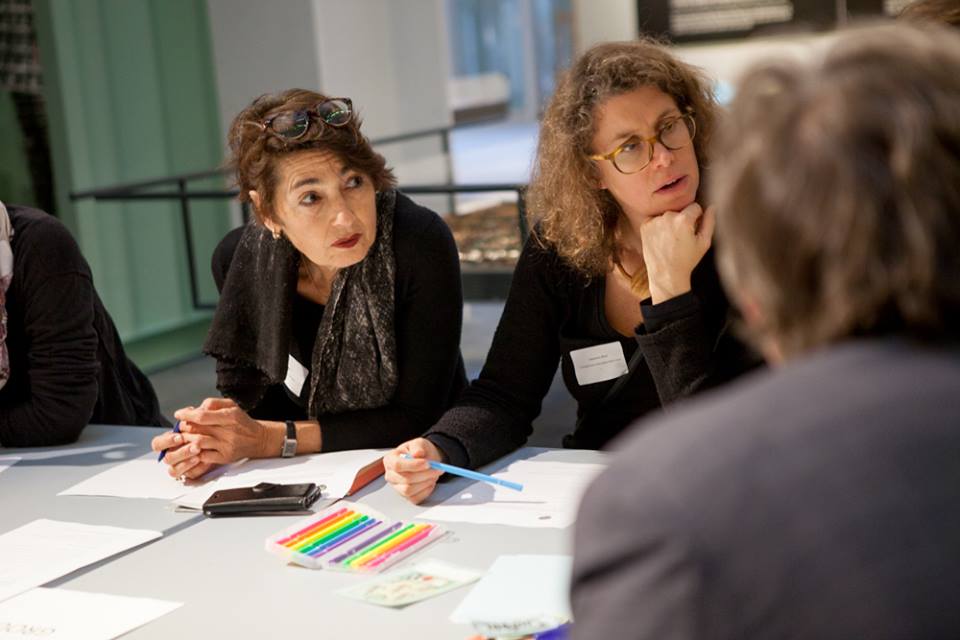
Two prototypes of tools that were developed during this workshop will be published online in the toolbox-section of the IMP-website soon. We invite you to test them and give us your feedback for improving the test version of the tools. Next to tools that focus more on brainstorming, the toolbox section on the website will also come to include practical guidelines and recommendations, during the course of the project.
Concluding remarks
In his concluding remarks, Albert van der Zeijden stated that for practicing intangible cultural heritage ‘we perhaps do not need museums, but they can do very useful things for the safeguarding of intangible heritage’. Linking the statements from the position paper to the concrete inspiring examples that were presented by the group of international museums, he concluded that a lot of museums already engage in contemporary society; that they are places for dialogue, but also for reflexivity in relation to intangible heritage, and that the laboratory-function of a museum is one of great interest for museums that really want to engage with contemporary practices of intangible heritage in our current society.
Paul van de Laar concluded this two-day meeting by stressing that museums should think about working interdisciplinarily and look for convincing business models. In a superdiverse society, museums that are state funded institutions, need to include heritage of all types - tangible as well as intangible. This heritage needs to be debatable and museums should therefore provide spaces for experimenting with contested forms of heritage as well.
Click here to read the report of the International conference on Intangible Cultural Heritage, Museums and Diversity.
Photos taken by © Vera Bos
Please inform us whether you might have objections to the contents of the video recordings or if you do not wish to be portrayed.
